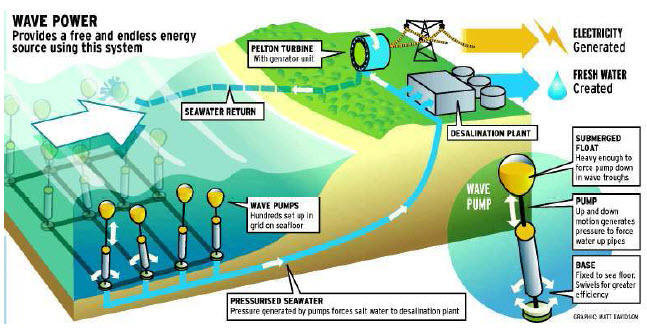Fri 7 Nov 2008

Wave power can provide an endless source of clean cheap power.
Hey, Dude, let’s catch some waves! Surely, every surfer in the world knows the power behind those waves, as does anyone whose ever fought the undertow to swim back ashore. An Australian company Carnegie Corporation believes that waves are indeed the wave of the future, and could supply up to 35% of Australia’s energy needs. Acknowledging that wave power faces stiff competition from other renewable forms of energy particularly wind and solar, managing Director Michael Ottaviano is none-the-less optimistic that wave power will become popular over time as the cost of harnessing the awesome power of the sea decreases.
“We know that our first plant will generate power at about the ame price as wind,” Orraviano explained, “Solar was twice as expensive 10 years ago … if we start out where wind is, we know that in five to 10 years we’ll be fossil fuel competitive.”Dr Ottaviano cites an RPS Met Ocean report that shows that more than 17,000 megawatts of wave energy can be extracted at any given time off Australia’s coasts. “This means that around 35% of Australia’s current power usage could be met by harnessing wave energy,” Dr Ottaviano concluded.
The system works by capturing the motion of buoys that are tethered to the sea floor which then drive compressed water to the shore where it is converted into electricity by forcing it through a Pelton turbine generator. Compressed water has some distinct advantages over offshore wind turbine generators in that compressed water can be stored in tanks for use during peak loads, and aside from some slight friction losses there is very little loss of power traveling the distance to the shore. When sending electricity from a wind turbine, or any time you transmit electrical current, transmission line losses are a real challenge.
The thing I like best is that the schematic includes powering a water desalination plant and then transmitting the remaining power off to wherever it’s needed. What this world really needs now, and more so in the future is an answer to the water shortage that is coming that will make peak oil seem like a walk in the park. This system seems to address both issues, so I will be keeping a close eye on developments!













